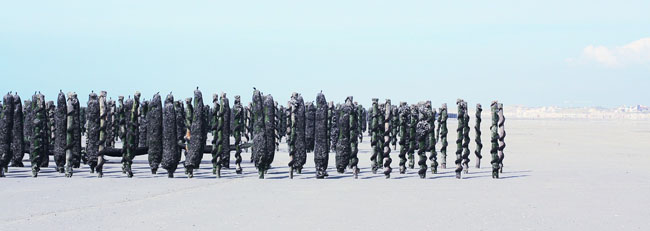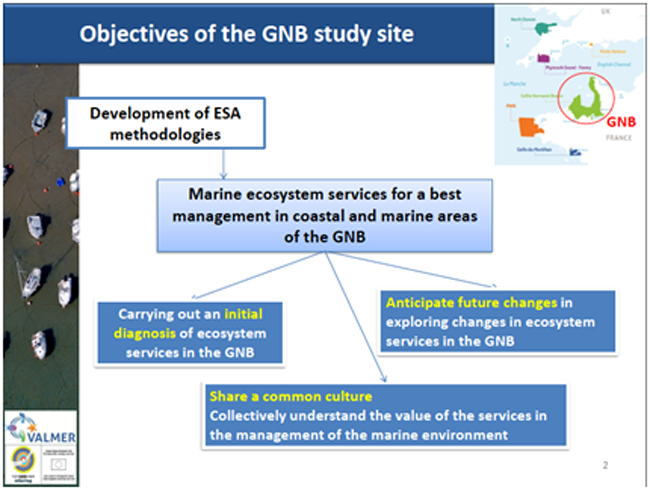5.4.4 Golfe Normand-Breton: Aims of the Ecosystem Services Assessment

Within the Golfe Normand-Breton case study site a range of different marine and coastal habitats and ecosystems provide a suite of different services and benefits, which contribute in various ways to local economies and more broadly to human wellbeing.
Covering the greater part of the case study area are subtidal muds, sands, and gravels that incorporate a surprising range of habitats and are home to a rich variety of flora and fauna.
Although intertidal marine habitats, composed of sandy or rocky foreshores, saltmarshes or biogenic reefs, are less widespread, they also remain very important because they supply a range of ecological functions essential to the life cycles of marine species.

A wide range of potential services and benefits from these marine habitats was identified but the key ones are:
- fish and shellfish stocks
- marine materials stocks
- carbon sequestration
- cultural heritage
- leisure and recreation
- storage and nutrient cycling
Since, the projected Golfe Normand-Breton park will manage the Natura 2000 marine sites and will have to write the DOCOB’s (aims document), the ecosystem services approach gave the opportunity to help the definition of future actions thought a new approach i.e. functional and not sectorial (e.g. N2000 is focused on the protection of listed species and habitats and present actions did not take into account the functioning of the marine environment).
After consulting local stakeholders, two main topics were identified to produce an initial diagnosis of ecosystem services in the area and to help anticipate of future changes:
Food services offered by coastal and offshore marine habitats and Recreational services offered by foreshore marine habitats
Three main aims have been identified through the TRIAGE process:
- Carrying out an initial diagnosis of ecosystem services in the Golfe Normand-Breton
- Anticipating future changes in exploring changes in ecosystem services in the GNB to facilitate trade-offs of priorities for a more integrated management of sea
- Sharing a common culture
At the end of the VALMER project, it was realised that in this site’s context (a large area with many different issues), the scenarios were very qualitative and that their main goal had switched from the anticipated trade-offs to creating a common culture by thinking collectively of different futures in term of ecosystem services.


